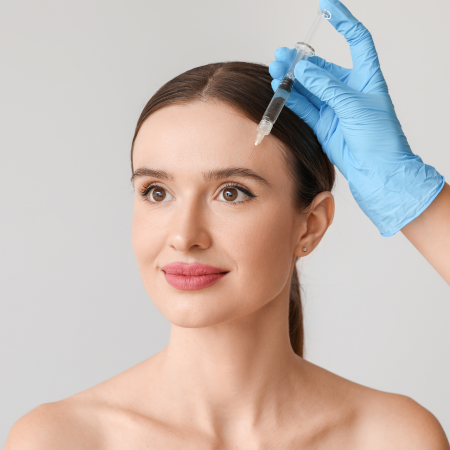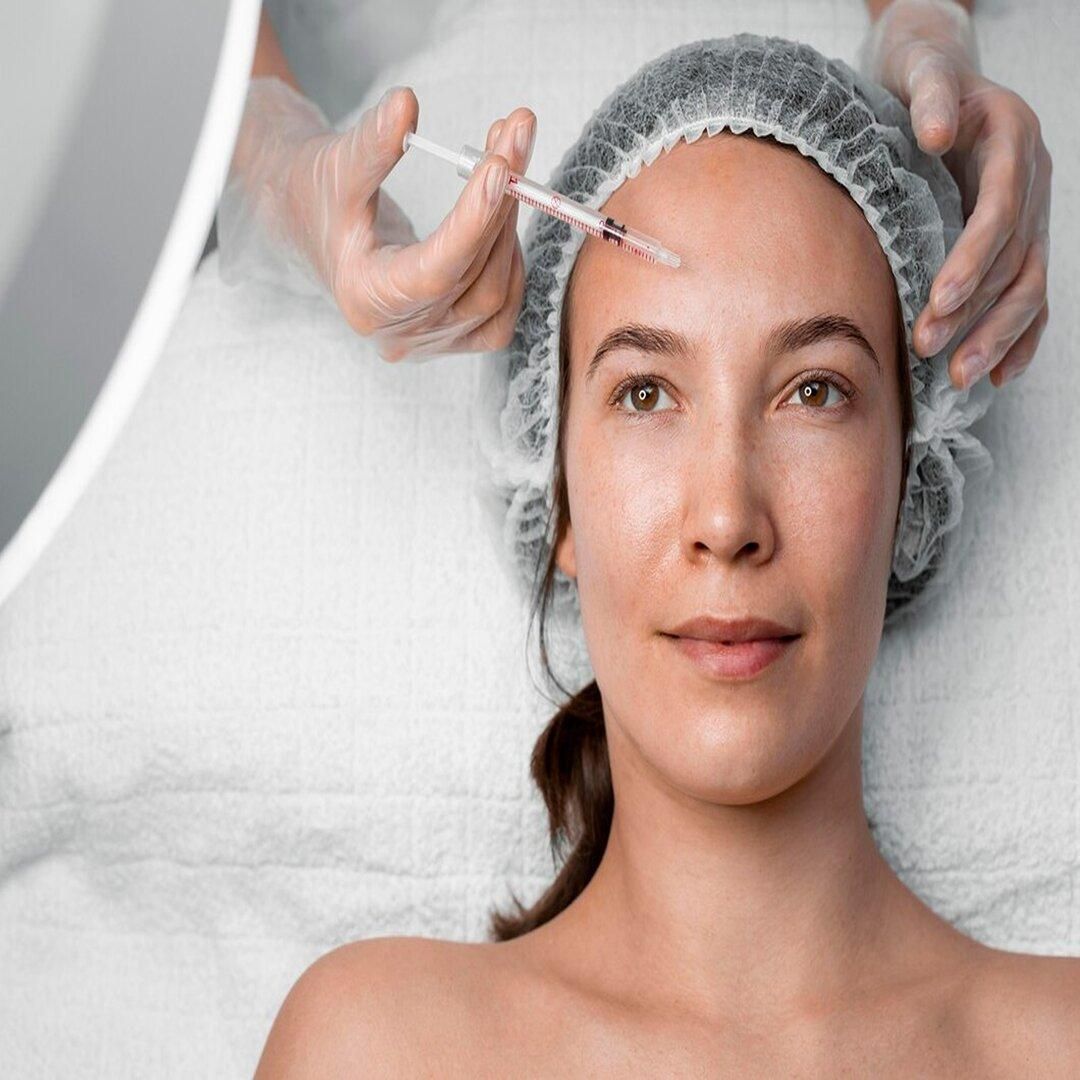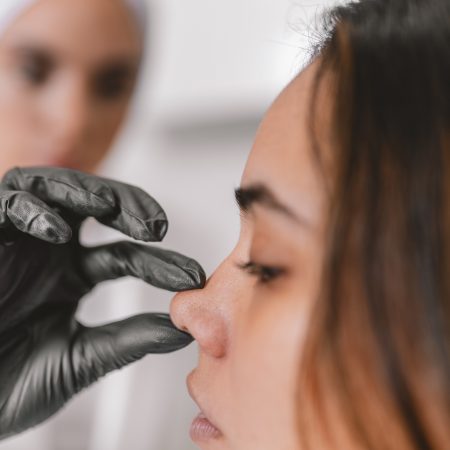Understanding the Diversity of PDO Threads for Non-Surgical Facelifts
The want for a youthful appearance has driven many individuals to explore non-surgical facelift options. Among these innovative treatments, PDO threading has gained significant popularity. This minimally invasive procedure offers remarkable results by addressing sagging skin and wrinkles without the need for surgery. What makes these treatments particularly intriguing is the diverse range of threads available, each designed to cater to unique aesthetic goals. We will delve into the world of the PDO thread lift, exploring their diversity for non-surgical facelifts.
What is PDO Threading?
The PDO thread lift has become increasingly popular as a minimally invasive alternative to the traditional facelift. These innovative procedures utilize these threads, which are medical-grade sutures, to lift and tighten the skin, resulting in a more youthful appearance. Unlike surgical facelifts that require incisions and extended downtime, and offer a non-surgical solution with minimal discomfort and a faster recovery.
They function by inducing the production of collagen in the skin through a natural healing response. As they’re inserted below the skin's surface using fine needles or cannulas, the threads are positioned to elevate and provide support to areas that have lost their elasticity over time. Once inserted, they generate tension, resulting in a lifted and tightened skin appearance, giving a rejuvenated look. These procedures offer adaptability for a range of concerns, including drooping jowls, nasolabial folds, marionette lines, eyebrows, neck sagging, and even body firming.
Achieving Youthful Charm with PDO Thread Lift
Unlike traditional facelift surgeries, which involve incisions and anesthesia, PDO thread facelifts are minimally invasive procedures that can be completed in a shorter timeframe. The procedure itself takes approximately one hour to complete, depending on the extent of treatment required. It is typically done using local anesthesia, minimizing discomfort during the process.
As mentioned earlier, the threads stimulate collagen production in the treated areas. This additional collagen helps support the lifted tissues and maintain an improved appearance over time. While individual results may vary based on various factors such as lifestyle and age, many patients report seeing improvements for up to one year or even longer.
Effectiveness and Longevity of The PDO Thread Lift
It's important to note that the effectiveness of thread facelifts can vary based on several factors, including individual anatomy, the skill of the provider, and the type of threads used. Choosing an experienced and reputable practitioner is crucial to ensuring optimal results.
In terms of longevity, the PDO thread lift can provide significant improvements for up to one year or longer. However, it's worth mentioning that individual experiences may differ. Factors such as lifestyle habits, skincare routines, and natural aging processes can influence how long the results last. Maintaining a healthy lifestyle and following recommended post-treatment care instructions can help prolong the effects of a PDO thread facelift.
Some may argue that surgical facelift procedures offer longer-lasting results compared to PDO thread facelifts. While this may be true in some cases, surgical facelifts involve more substantial downtime, potential scarring, and higher costs.
Different Thread Lengths and Insertion Methods in PDO Thread Procedures
When it comes to PDO thread procedures, one size certainly does not fit all. The choice of thread length and insertion method plays a crucial role in achieving the desired aesthetic outcomes. Let's explore the significance of different thread lengths and insertion methods in PDO thread procedures.
Thread Lengths:
1. Short Threads (25mm to 50mm):
- Short threads are typically used for addressing minor sagging and wrinkles in areas like the cheeks and nasolabial folds.
- They provide subtle lifting and rejuvenation effects.
- Short threads are ideal for patients seeking a more natural-looking enhancement.
2. Medium Threads (60mm to 90mm):
- Medium-length threads are versatile and can be used in various facial regions, including the jawline and neck.
- They offer more significant lift and tightening, making them suitable for moderate to advanced signs of aging.
- Medium threads provide a balance between noticeable results and a natural appearance.
3. Long Threads (100mm to 180mm):
- Long threads are reserved for addressing severe sagging, especially in the neck and lower face.
- They deliver the most dramatic lifting effect and are often referred to as "non-surgical facelifts."
- Long threads are suitable for patients seeking comprehensive rejuvenation.
Insertion Methods:
1. Straight-Line Technique:
- In this method, threads are inserted in a linear pattern, following the direction of the wrinkles or sagging.
- It's commonly used for addressing fine lines and wrinkles on the forehead and around the mouth.
2. Mesh Technique:
- The mesh technique involves creating a network of threads beneath the skin to provide overall support and tightening.
- It's effective for improving skin texture and addressing mild to moderate sagging in larger areas like the cheeks.
3. Spiral Technique:
- In the spiral technique, threads are inserted in a spiral pattern, creating a lifting effect in a specific area.
- It's often used to target sagging in the mid-face and jowls, offering a more sculpted appearance.
4. Anchor Technique:
- The anchor technique involves securing threads at specific points to achieve a strong lifting effect.
- It's suitable for addressing deep wrinkles and significant sagging in areas like the neck and jawline.
5. Combination Techniques:
- Experienced practitioners may combine different insertion methods and thread lengths to customize treatments for individual patients.
- This approach allows for a tailored solution that addresses multiple concerns in a single procedure.
The selection of thread length and insertion method should be based on the patient's unique anatomy, aesthetic goals, and the practitioner's expertise. A thorough consultation and assessment are essential to determining the most appropriate approach. Ultimately, PDO thread procedures offer a highly customizable and minimally invasive option for achieving a rejuvenated and lifted appearance, thanks in part to the flexibility offered by varying thread lengths and insertion methods.
Apprehensions of PDO Thread Facelift Surgery
Undergoing any type of cosmetic procedure can understandably raise apprehensions and concerns. The same holds true for PDO thread facelift surgery, as patients may have specific worries about the process or potential outcomes. Let's explore some common apprehensions and address them in order to provide a better understanding.
- Invasiveness of the procedure: Unlike traditional surgical facelifts, this procedure is non-surgical and require minimal incisions. This means less scarring, reduced downtime, and fewer risks associated with anesthesia. While there might be slight discomfort during the insertion of the threads, it is typically well tolerated.
- Longevity of results: Patients often wonder how long their lifted appearance will last. It's important to note that individual results vary depending on factors such as age, skin condition, lifestyle choices, and personal biological responses. However, PDO threads are designed to stimulate collagen production, which helps maintain the lifted effect for an extended period compared to other non-surgical procedures.
- Potential complications: While every medical procedure carries some level of risk, when carried out by knowledgeable and skilled professionals, complications are relatively uncommon. These professionals adhere to proper techniques and guidelines to minimize any adverse effects.
Mitigating risks and side effects
Medical professionals prioritize patient safety when performing PDO thread facelifts. Steps are taken to minimize risks and manage any potential side effects that may arise during or after the procedure. Let's take a closer look at how these concerns are addressed.
- Prior to the procedure, a comprehensive consultation is conducted to assess the patient's medical history, skin condition, and desired outcome. This allows the healthcare provider to determine whether PDO thread lift is suitable for the individual and helps identify any potential contraindications or additional precautions that need to be considered.
- During the procedure itself, strict adherence to aseptic techniques is essential to reduce the risk of infection. Medical professionals ensure a sterile environment and use FDA-approved PDO threads that have been thoroughly tested for safety and efficacy.
- Aftercare instructions play a crucial role in minimizing risks and optimizing outcomes. Patients are advised on proper wound care, including avoiding excessive pressure or manipulation of treated areas. They are also educated about possible side effects such as temporary swelling, bruising, or mild discomfort, which typically subside within a few days.
- Regular follow-up visits allow medical professionals to track healing progress, address any concerns or complications promptly, and provide ongoing support throughout the recovery period.
Examining Varieties and Results of PDO Threading
PDO threads have revolutionized the field of non-surgical facelifts, offering a wide range of options to address different concerns and achieve desired results. One of the key aspects to consider is the variety of types available on the market. These threads can be classified into two main categories:
- Smooth threads.
- Barb threads.
Smooth thread
Smooth threads are smooth and evenly textured along their length. They are typically used to improve skin texture, stimulate collagen production, and provide support to the skin without the same level of immediate lifting as barbed threads. Barb threads are known for their ability to provide lifting and repositioning effects on the skin. They are designed with tiny barbs that grip onto the surrounding tissues, allowing for immediate lift and contouring. Within the category of barb threads, we can further explore two specific types: bi-directional and multi-directional barb threads.
Bi-directional vs. multi-directional barb threads
If you're looking to address sagging cheeks and restore youthful contours, Bi-directional barb threads would be an excellent choice, as they offer lift in two directions. The barbs on these threads face both upward and downward. When inserted into the skin, they provide an immediate lifting effect in both directions. This can help reposition sagging skin, improve cheek definition, and create a more youthful appearance.
On the other hand, multi-directional barb threads take things a step further by offering lift in multiple directions. These threads have barbs facing not just upwards and downwards but also sideways. This unique configuration allows for greater control over facial contours, making them suitable for addressing complex areas like nasolabial folds or marionette lines where multidirectional support is required.
While both bi-directional and multi-directional barb threads provide impressive lifting effects, it's essential to consider individual patient needs and desired outcomes when choosing between them.
In terms of results, both types of barb threads offer immediate, visible improvements by lifting sagging tissues. Patients can expect continued enhancements in their appearance as the threads dissolve and natural collagen continues to rebuild.
It's worth noting that selecting the most suitable thread type for a patient requires a thorough assessment by a qualified medical professional. Factors such as skin laxity, facial anatomy, and desired outcomes all play a role in determining whether bi-directional or multi-directional barb threads would yield the best results.
Moreover, it is essential to manage patient expectations and communicate that PDO threads offer subtler results compared to surgical facelifts. While they can deliver significant improvements in skin lift and rejuvenation, PDO threading treatments are non-invasive and have minimal downtime. They serve as an excellent option for patients who desire natural-looking enhancements without undergoing surgery.
In conclusion, PDO threads for non-surgical facelifts are revolutionizing the way we approach facial rejuvenation. Their diversity in thread types and applications allows for personalized treatment plans, making them suitable for a wide range of patients. With minimal downtime, natural results, and the safety of a proven medical-grade material, they have become a go-to option for those seeking a refreshed and youthful appearance without going under the knife. Before considering any cosmetic procedure, it's essential to consult with a qualified and experienced practitioner to discuss your goals and determine if this procedure is the right choice for you.
Sign up for Newsletter
Get the latest updates, events, sales, training opportunities and more on MINT™ PDO!
Sign up for Newsletter
Thank you for signing up for our newsletter! You will be the first to know about new releases, events, giveaways, and special projects!
Please try again later.
Disclaimer: This site is intended for healthcare professionals who have received proper education on the use of cosmetic sutures. MINT™ PDO products are subject to regulation by the U.S. Food and Drug Administration and state and local regulatory agencies [FDA Clearance (K130191, K192423, K220549). The information on this site does not, and cannot, provide medical advice and is for general informational purposes only. If you are a patient it is important to discuss health information with your doctor. Individual results may vary. Hans Biomed’s provision of products, training, or other services to a medical provider, or the listing of a medical provider as using Hans Biomed products or services, including training, does not constitute Hans Biomed’s endorsement, representation of assurance regarding the medical provider’s qualifications, skills or experience, or affiliation. Medical providers are independent of Hans Biomed and subject to their jurisdiction’s licensing requirements. Hans Biomed assumes no liability for services provided by any medical provider. Patients are advised to independently investigate the qualifications of any medical provider. Hans Biomed provision of products, training or other services to medical providers is not intended, in any way, as the practice of medicine. Hans Biomed product information in any website, product brochure, or in response to any patient inquiry is intended for informational purposes only and makes no guarantee regarding any medical procedure. Decisions whether to use Hans Biomed’s products or their appropriateness for use should be done in consultation with one’s medical provider.
© Copyright 2022 | All Rights Reserved | MINT™ PDO



